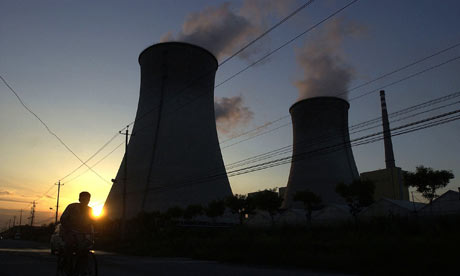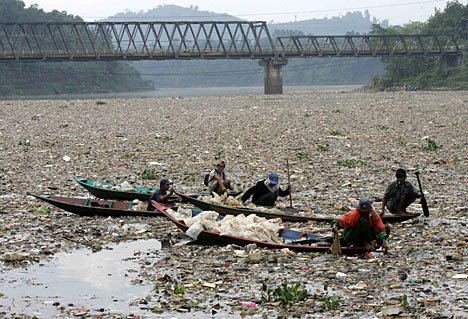
In this Nov. 30, 2007 file photo, backdropped by cooling towers of a power plant and chemical factory, miners shovel coal at a mine in Xiahuayuan county, north China's Hebei province. China has raised wholesale electricity prices for the second time in two months to offset soaring coal prices blamed for shortages that threaten to disrupt the economy. (AP Photo/Oded Balilty, File)
Scientists Fear Impact Of Asian Pollutants On U.S.
-- Yahoo News/McClatchy
WASHINGTON — From 500 miles in space, satellites track brown clouds of dust, soot and other toxic pollutants from China and elsewhere in Asia as they stream across the Pacific and take dead aim at the western U.S.
A fleet of tiny, specially equipped unmanned aerial vehicles, launched from an island in the East China Sea 700 or so miles downwind of Beijing , are flying through the projected paths of the pollution taking chemical samples and recording temperatures, humidity levels and sunlight intensity in the clouds of smog.
On the summit of 9,000-foot Mt. Bachelor in central Oregon and near sea level at Cheeka Peak on Washington state's Olympic Peninsula , monitors track the pollution as it arrives in America.
Read more ....













